This website uses cookies so that we can provide you with the best user experience possible. Cookie information is stored in your browser and performs functions such as recognising you when you return to our website and helping our team to understand which sections of the website you find most interesting and useful.
What to drink at Il Maremmano and Maremma
Louis Thomas makes a beeline for Brixton to get two tastes of the Tuscan coast at cocktail bar Il Maremmano and its sister restaurant Maremma.
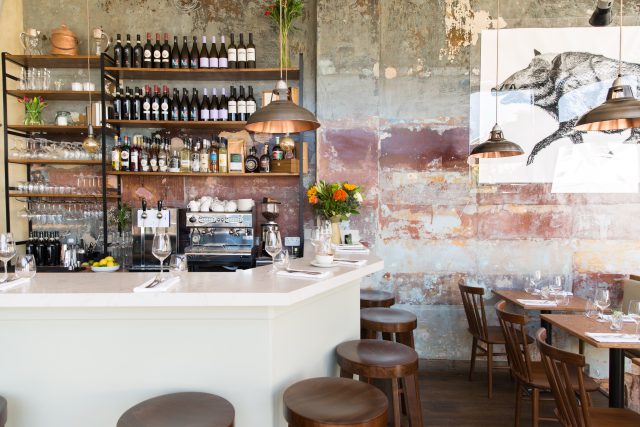
Dickie Bielenberg, who co-founded the both the bar and restaurant with partner chef Alice Staple, said that draw of this part of Tuscany is that it is “relatively unknown”, and points out that malaria, which was widespread in the marshy Maremma, played a major role in the development of its food culture: “It led to periodic local lockdowns, where villages would isolate themselves, fearing the spread of the disease, which they didn’t understand was transmitted by mosquitoes and not contagious between humans.”
“This meant that each village has developed its own strong and unique identity, with the food culture indigenous to each place – wild boar in the mountains, fish on the coast etc.,” he explained. “This variety is matched by the wine industry, which has evolved to complement the local cuisine with a variety of wines that reflect the diverse microclimates and terroirs of the region.”
Fortunately, the risk of malaria in the region today is substantially lower, and in Brixton you should be safe from even the hardiest of mosquitoes.
Il Maremmano
Bielenberg revealed that many customers head to Il Maremmano either pre- or post-dinner for aperitivo/digestivo – in our case, we opt for the former.
“In my Italian hometown, Grosseto, you wander into town and during the day the small bar in our piazza is open for coffee and cornetti for breakfast and panini and beer for lunch. Come early evening it’s full of locals enjoying a spritz and stuzzichini before
dinner. It’s the hub of the town and is a real community,” he shared. “We wanted to create something similar in Brixton, where I’ve lived for 50 years. The concept fits knowledgeable foody young Brixtonions and the vibrant social culture of Herne Hill – people who really want to know the heritage of the food, wine and cocktails.”
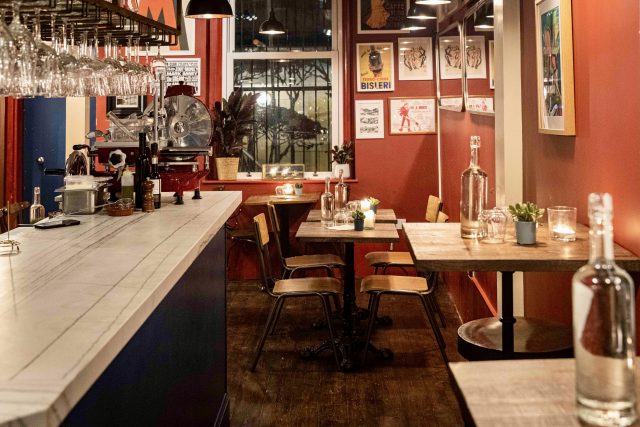
While I’m no Brixtonian and would never call myself a “foody”, I am still young for the moment, and found the rather snug space of Il Maremmano, complete with vintage posters, including for Perugina chocolate, and a Berkel deli slicer, to be very up my strada.
The drinks were also somewhat unexpected – for example: the luscious Chilli Cherry Negroni (£12), with its tongue-numbing heat and restrained sweetness, and the Old Maremma (£13), which is based on Vecchia Romagna and, thanks to the presence of Cointreau and orange flower honey, is reminiscent of a brandy-soaked Jaffa Cake (a compliment).
These cocktails clearly draw on Italian classics, but veer away from tradition. For Bielenberg, it’s all about having some “artistic license”: “You can’t have an Italian cocktail bar without a Negroni or spritz, but we love that we have six types of Negroni on offer and for our spritz we work with unusual liqueur brands, rather than mainstream ones, such as Pampelle grapefruit liqueur, and Cynar, an artichoke liqueur – well-loved in Bologna particularly but still relatively unknown here. We’re also working with small artisanal producers from the Maremma like Gin Gioa.”
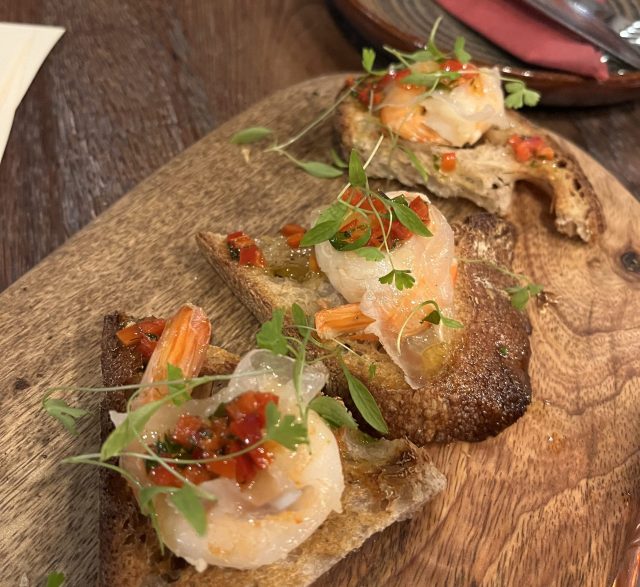
Though Bielenberg’s personal favourite combination at Il Maremmano is a White Negroni with a tagliere of salumi and formaggi (all sourced from suppliers in Maremma), we choose to crunch our way through the crostoni collection, with toppings such as prawns with lardo and chilli (the ideal of surf and turf), winter chanterelles with ricotta, and green anchovy with butter (£8 each) providing an excellent accompaniment to the drinks, and make me briefly forget that I am not, in fact, in the old country.
Maremma
Having undertaken the two minute pilgrimage round the corner from Tulse Hill onto Brixton Water Lane, we entered Maremma to find an altogether different experience – whereas Il Maremmano is somewhere for a contemplative drop of something, this is a bustling restaurant with baskets of bread and carafes of wine being ferried to and fro.
Indeed, the presence of carafes of wine was a promising sign – one of the greatest of the many joys of dining in Italy is how most establishments have wine by the carafe available, with a anything from 375ml to 500ml making for the perfect serving for a decent lunch. In the case of Maremma, a few of their wines are available in the former size, with the price starting at £15 for the house red and white, both by regional co-operative Terre dell’Etruria.
“Customers love the carafes as they have the freedom to choose another wine without buying a whole bottle,” said Bielenberg.
Of course, Maremma as a region is not known for mosquitoes today, but rather as the home of some of Italy’s most-revered wines.
Asked about how he and Staple find producers to source the wines from, Bielenberg joked: “Unfortunately, we have to travel to Tuscany on research trips – a true hardship!”
“We travel all round the Maremma, get tips from local friends, try wines in local restaurants and meet all our producers. It’s one of the best parts of what we do.”
There are few non-Tuscan intruders, including a couple of Franciacortas and a Piemontese Roero Arneis, but the list is largely Maremma-focused.
One of the most striking things about the list is how reasonable the prices seem, especially given that a lot of the wines are from small, niche producers – but, according to Bielenberg, this is precisely why they’re affordable: We import the wines directly as much as possible and buy from UK-based distributors as little as possible. We are the importer of most of the wines on our wine list, directly, therefore saving on margin.”
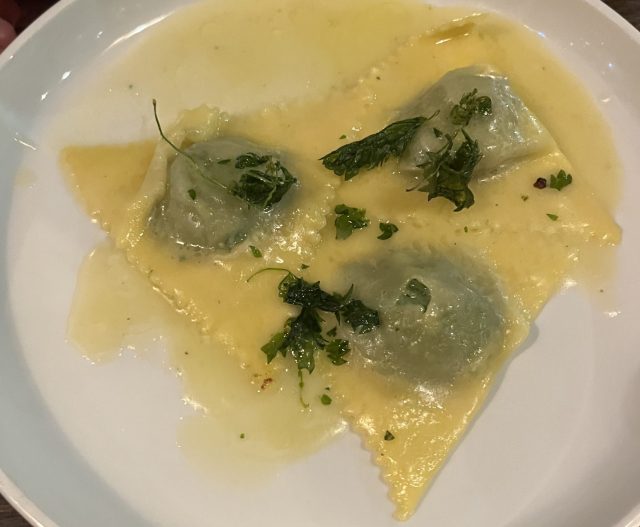
With a primo of nettle pansotti, I find that a caraffe of Villa Di Cornia’s 2022 Tutti Santi (£16, or £32 for the full bottle), a blend of two parts Trebbiano to one each of Malvasia and Vermentino, does the job rather well, offering a wet stone aroma that complements the iron-y, chlorophyll-y nature of the nettle. The wine was not necessarily fruit-forward, which may put some punters off, but it makes for a very refreshing start to the meal, and was also highly agreeable alongside the richness of the duck terrine, and worked especially well with the pickled fennel it was served alongside.
The grape the features most heavily, a necessity for any Tuscan restaurant worth its unsalted bread, is, of course, Sangiovese – the shining starlet of Chianti Classico and Brunello di Montalcino, it is also cultivated in the Maremma.
“Sangiovese is definitely a food grape and it’s no coincidence that it matches the dishes of the Maremma with so much red meat, salumi and strong cheeses,” argued Bielenberg. “The different varieties sit on a broad spectrum from relatively uncomplicated to a more complex, substantial wine.”
“For example, we often have a Morellino di Scansano by Acquaviva, which is 85% Sangiovese, on the fuller end of the spectrum that goes perfectly with a bistecca alla fiorentina, or the more tannic herbal varieties such as the 100% Sangiovese by Simone Setti that you might pair with pappardelle with wild boar ragù. Plus there are one or two excellent winemakers who are producing white Sangiovese (including ourselves), which is very exciting as it’s almost like a new wine. A white wine but with a pink tinge, but in no way rosé. It’s got a red nose and white palate. Your eyes deceive you, but it’s all magic.”
On Maremma’s list, there is the Cantina La Selva 2022 Sangiovese Bianco (£42 a bottle). I suspect it could be a very good pairing with Federico’s sausages with braised lentils – a salty, savoury, earthy dish that, to my mind, requires a wine that will bring some brightness.
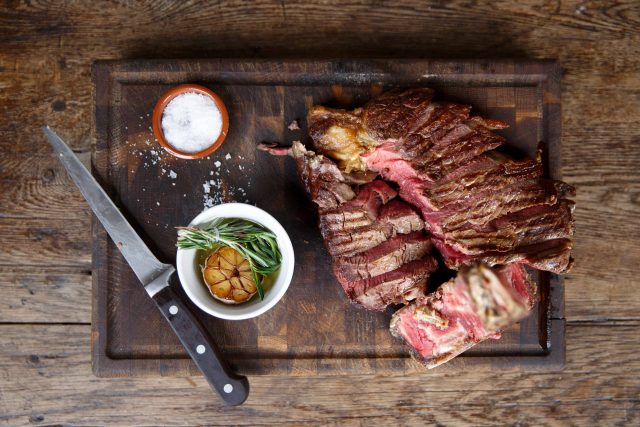
While Maremma is very much the place to go to taste Tuscan wines you are unlikely to have tasted before in London, Bielenberg shared that there are still recognisable, big names from Bolgheri on the list.
“We currently have three Super Tuscans on special at the moment: Tenuta San Guido Le Difese, 2020, Le Serre Nuove dell’Ornellaia, Bolgheri 2013, and Tenuta Antinori Biserno 2017.”
All of these are also available by-the-glass.
“We’ve had many others in the past, including Sassicaia, Tignanello and Ornellaia,” he added.
Choosing his own picks for an antipasto, primo, secondo and dolce, and what to drink with them, Bielenberg went for the following selection:
- Tuna tartare with La Fralluca Bauci, Viognier (£40 a bottle)
- Wild boar pappardelle with Simone Setti, Sangiovese
- Hake, clams, samphire and aioli with Tenuta Casteani Serin, Vermentino (£36 a bottle)
- Pear and pecorino gelato with Villa Acquaviva Tutti Santi, Malvasia and Trebbiano
To cap off my own meal, I ordered an appropriately fiery grappa from none other than Super Tuscan stalwart Sassicaia to wash down the pleasingly peppery basil straciatella, though speaking to Bielenberg afterwards made me regret not going for another digestivo option – limoncello made from lemons from his own allotment in Maremma. It’s certainly something I will come back for, not that I need to find an excuse…
Related reading:

